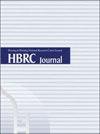Strengthening of existing RC buildings by using autoclaved aerated concrete infill wall
Q2 Engineering
引用次数: 3
Abstract
ABSTRACT The objective of this study is to use autoclaved aerated concrete (AAC) for infill walls in existing buildings that are unsafe for earthquakes to increase their stiffness. The study included two topics; the first topic introduced six models using AAC in buildings resistance to earthquakes and the effect of self-weight of the buildings comparing bare frame clay partition masonry model (1), bare frame AAC partition masonry model (2), reinforced concrete frames clay infill wall model (3), reinforcement concrete frames AAC infill wall model (4), reinforcement concrete frames AAC infill wall core model (5), reinforcement concrete frames AAC infill wall first and second floors model (6). ETABS software was used to investigate all frame models. Results of the study revealed that AAC infill wall decreases base moment, base shear and displacement. On the other hand, second topic presented five models of single reinforcement concrete frame under lateral loading, considering effect of anchored and unanchored AAC infill wall and clay infill wall. These models are bare frame model (a), RC frame with clay infill wall unanchored model (b), RC frame with AAC infill wall unanchored model (c), RC frame with clay infill wall with anchors model (d), RC frame with AAC infill wall with anchors model (e). Using finite element software (ANSYS WORKBENCH 18.2) failure load, displacement and ductility were presented for all five frames. The results showed that the ‘RC frame with AAC infill wall with anchors’ model gives the biggest failure load whereas displacement and ductility are the lowest.用蒸压加气混凝土填充墙加固现有钢筋混凝土建筑物
本研究的目的是使用高压灭菌加气混凝土(AAC)填充墙在现有的建筑物,是不安全的地震,以增加其刚度。该研究包括两个主题;第一个课题介绍了六种使用AAC进行建筑抗震及自重影响的模型,比较了裸框架粘土隔墙砌体模型(1)、裸框架AAC隔墙砌体模型(2)、钢筋混凝土框架粘土填充墙模型(3)、钢筋混凝土框架AAC填充墙模型(4)、钢筋混凝土框架AAC填充墙核心模型(5);钢筋混凝土框架AAC填充墙一、二层模型(6)。采用ETABS软件对所有框架模型进行研究。研究结果表明,AAC填充墙降低了基础弯矩、基础剪力和基础位移。另一方面,第二主题提出了考虑锚固和非锚固AAC填充墙和粘土填充墙影响的横向荷载作用下的五种单钢筋混凝土框架模型。这些模型分别是裸框架模型(a)、粘土填充墙无锚固模型(b)、AAC填充墙无锚固模型(c)、粘土填充墙有锚固模型(d)、AAC填充墙有锚固模型(e)。利用有限元软件(ANSYS WORKBENCH 18.2)对这五种框架进行了破坏荷载、位移和延性分析。结果表明:“钢筋混凝土框架加AAC填墙锚杆”模型的破坏荷载最大,而位移和延性最低;
本文章由计算机程序翻译,如有差异,请以英文原文为准。
求助全文
约1分钟内获得全文
求助全文

 求助内容:
求助内容: 应助结果提醒方式:
应助结果提醒方式:


